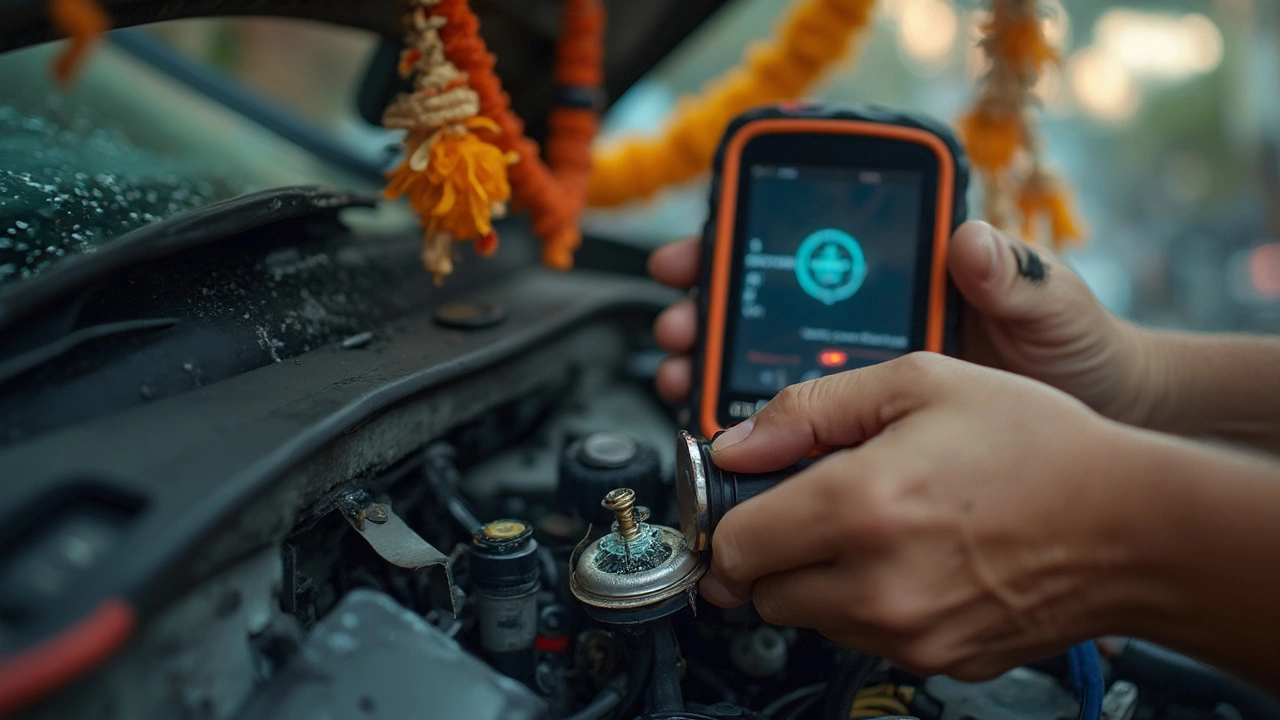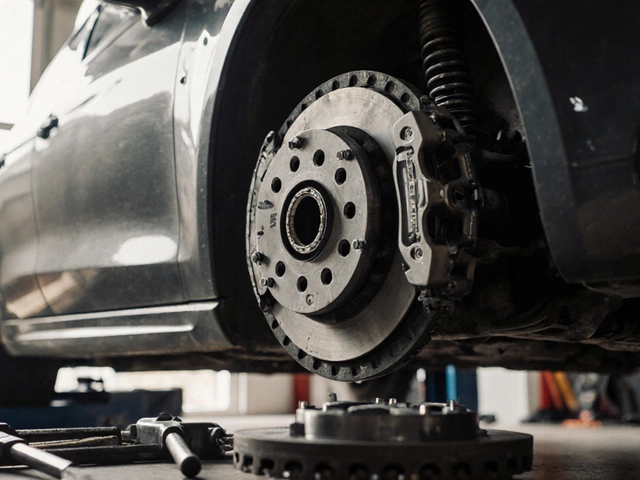Ever had your car suddenly lose power and wondered what’s going on? If you’re thinking about the fuel pump, you’re not alone. Plenty of folks want to know—will a bad fuel pump actually trigger a warning code or make the check engine light pop on? The answer isn’t as straightforward as you might think.
A failing fuel pump won’t always throw a code by itself, even though it can leave you stranded on the side of the road. Modern cars use sensors all over the place, but there usually isn’t a specific code just for the fuel pump itself. Instead, you might catch codes that relate to things like “lean condition,” misfires, or fuel pressure sensors acting weird. It’s the car’s way of saying, “Something’s off with the fuel system,” without pointing a finger right at the pump.
Here’s where it gets tricky: you could have a sputtering engine or rough starts, but no flashy warning on the dash. That’s why you can’t depend only on codes to spot a bad fuel pump. Knowing the real-life signs and how the car’s computer actually checks for fuel problems can save you time, money, and a ton of frustration. Stick around for practical tips on how to catch fuel pump trouble—before your ride totally dies on you.
- How Fuel Pumps and Codes Connect
- Typical Bad Fuel Pump Symptoms
- What Diagnostic Tools Can (and Can’t) Reveal
- Tips for Checking and Fixing Fuel Pump Issues
How Fuel Pumps and Codes Connect
If you’re trying to figure out if a bad fuel pump will pop a check engine light or set off a code, here’s the deal: the fuel pump itself doesn’t have a built-in sensor in most cars. The ECU (Engine Control Unit) doesn’t talk to the pump directly. It relies on signals from sensors like the fuel pressure sensor, oxygen sensors, and mass airflow sensor to catch fuel issues.
The fuel pump code question gets blurry because the pump failing usually causes other things to go wrong, like low fuel pressure or “lean” running. The car’s computer might throw out codes like P0087 (fuel rail/system pressure too low) or P0171 (system too lean). But you rarely see a code that screams, “Hey, your fuel pump is cooked.”
Newer cars are a bit smarter. Some have sensors to monitor fuel delivery more closely, but even then, most error codes still come from the sensor data, not from a broken pump itself. For example, a 2018 Ford F-150 can set off a P0087 code if the computer sees the fuel pressure is way off target, hinting that the fuel pump or the fuel pressure regulator is struggling.
Here’s a quick breakdown of codes often linked to fuel pump trouble:
- P0087: Fuel Rail/System Pressure – Too Low
- P0230: Fuel Pump Primary Circuit Malfunction
- P0171: System Too Lean (Bank 1)
- P0174: System Too Lean (Bank 2)
Here’s a quick look at how often these types of issues trigger codes, based on recent diagnostic data:
| Issue | Odds of Triggering a Code |
|---|---|
| Faulty Fuel Pump | 30% (usually codes for low fuel pressure) |
| Clogged Fuel Filter | 20% |
| Bad Fuel Pressure Sensor | 85% |
| Leaky Fuel Injector | 70% |
So, if you’re hoping for a simple ‘bad fuel pump’ code, you’ll probably be disappointed. Most of the time, a dying pump sets off related warnings or leaves no digital trace at all.
Typical Bad Fuel Pump Symptoms
Catching a dying fuel pump early can save you from a big headache. So, what should you watch for? Here are the issues that pop up most often when the fuel pump starts going south.
- Hard starting: If your car makes you crank the engine longer than usual or it takes a few tries to start, the pump might not be delivering enough fuel.
- Engine sputtering at high speeds: Cruising down the highway and suddenly the car feels like it’s running out of breath? A weak pump can’t keep up with demand when you need power most.
- Loss of power under stress: Going uphill or trying to pass another car and the engine just falls flat? That’s a classic sign the fuel pump’s pressure is too low.
- Frequent stalling: This annoys everyone. If the engine dies randomly, especially after it’s warmed up, a struggling fuel pump could be the culprit.
- Jerking or surging: Sometimes, the car will surge forward or jerk when accelerating. This usually means fuel is reaching the engine in fits and starts.
- Sudden engine shutoff: The car just dies mid-drive, almost like someone hit the kill switch. With fuel pumps, this can happen without warning.
- Noticeably louder pump noise: Most of the time, you shouldn’t hear your fuel pump. If you start hearing a whining or buzzing from the tank area, it’s begging for attention.
And don’t think these symptoms always come with a fuel pump code or that handy check engine light. Sometimes, you’re flying blind—just feeling the car struggle and nothing mechanical screaming for help on the dash.
Check out this quick comparison table showing which symptoms appear most frequently in cars with bad fuel pumps versus other common fuel issues:
| Symptom | Bad Fuel Pump | Other Fuel Issues (injectors, filter) |
|---|---|---|
| Hard Starting | Common | Sometimes |
| Stalling | Very Common | Possible |
| Loss of Power | Common | Possible |
| Engine Surging | Possible | Possible |
| Loud Pump Noise | Usually | Rare |
So, if you notice a few of these red flags at once, don’t brush it off. Get your fuel system checked before you end up stranded.

What Diagnostic Tools Can (and Can’t) Reveal
If you’re hoping a scan tool will scream “bad fuel pump” in your face, that’s usually not what happens. Here’s the real deal: most OBD-II scanners are great at pulling codes, but they don’t have a direct way to sense a failing fuel pump. Instead, they catch trouble that pops up when fuel delivery gets weird.
Your car’s computer controls fuel flow based on sensor readings, but it has to guess if fuel pressure is dropping. Usually, if the pump isn’t delivering enough, you’ll see codes like P0171 (system too lean), P0300 (random misfire), or something about fuel rail pressure (P0087). These are all clues, not smoking guns. Unless your vehicle’s got a specific fuel pressure sensor—and not every car does—you’re left putting the puzzle together yourself.
Let’s break down what typical diagnostic tools can do:
- Code Readers: Pull basic engine codes like “lean condition” or “misfire.” They won’t directly tell you the pump is bad.
- Advanced Scan Tools: Check live fuel trim data, look at fuel rail pressure (if your car supports it), and compare to what’s normal.
- Fuel Pressure Gauges: These old-school mechanical tools hook to your fuel rail and show exactly how much pressure is in the system. If it’s way below spec, your pump (or filter) is suspect.
If you’re using just a code reader, you might get frustrated. That fancy tool may only point to a “lean” code while not saying a word about the fuel pump itself. Shops often check fuel pressure directly even after seeing codes, since a failing pump might leave zero evidence in the computer’s memory.
Here’s a quick cheat sheet for what you might see with a bad fuel pump versus what the scanner can actually show:
| Issue | Scanner Codes | Pressure Reading |
|---|---|---|
| Bad Fuel Pump | P0171, P0300, P0087 | Low (below spec) |
| Clogged Fuel Filter | P0171, P0087 | Low (may spike, then drop) |
| Injector Failure | P030x (misfire on specific cylinder) | Normal |
Bottom line: diagnostic tools are great at flagging that something’s off in the fuel system, but most won’t just spell out “your fuel pump is toast.” If you want a sure answer, get a fuel pressure test done and see those numbers for yourself. That’s the move that saves you from guessing—and a tow bill.
Tips for Checking and Fixing Fuel Pump Issues
If your car’s acting up and you suspect the fuel pump, there’s a way to be smart about it instead of just guessing. Start with the obvious signs: does your car struggle to start, or does it stall out after running for a bit? These are classic symptoms, and you don’t want to ignore them.
First, listen closely. When you turn the key to "on" (before cranking), you should hear a soft whirring sound from the fuel tank. That noise is the fuel pump priming the system. No sound at all? That could be a big clue the pump’s dead.
Next, check your car’s fuel pressure. You’ll need a fuel pressure gauge—some auto parts stores rent them out. Look up your car’s recommended pressure. Here’s a quick reference for a few common models:
| Car Model | Normal Fuel Pressure (psi) |
|---|---|
| Honda Civic 2015 | 50-60 |
| Chevy Silverado 2012 | 55-62 |
| Ford Focus 2014 | 55-65 |
| Toyota Camry 2016 | 44-50 |
If your reading is way under these numbers, your fuel pump or filter could be to blame. Low pressure is one of the strongest hints you’re dealing with a fuel pump code problem, even if the scanner doesn’t spell it out for you.
Don’t forget the fuel filter. A clogged filter can mimic a bad pump. If it’s been a while since it was changed, swap it out first. Sometimes you get lucky, and that’s all it takes.
Electrical connections matter too. Pop the hood and check your fuse box for a blown fuse, and trace the fuel pump relay to see if it’s clicking when you cycle the ignition. A bad relay or corroded connector can cut power to the pump and leave you stranded.
- Check for codes with a basic OBD2 scanner. Not all scanners show manufacturer-specific codes, so a cheap one might miss something.
- Spray starting fluid into the air intake. If the engine fires up for a second, you’ve likely got a fuel delivery issue, not a spark issue.
- If you’re stuck on the road, knocking the fuel tank with a rubber mallet sometimes gets a failing pump working (briefly), just enough to get home. Not a fix, but a solid hack when you’re desperate.
Replacing a fuel pump isn’t rocket science, but it’s not a quick job either. Always disconnect the battery and relieve fuel pressure before you start. If you’re not comfortable diving under the car or messing with the tank, no shame—call a pro. Labor can run $150-$350 on top of parts, which usually hit $100-$400 depending on your ride.
Stay alert for early warning signs and you’ll stop a total breakdown in its tracks. Keep an eye on fuel pressure and listen to your car—it’ll clue you in long before a check engine light does.




